If Walls could Talk
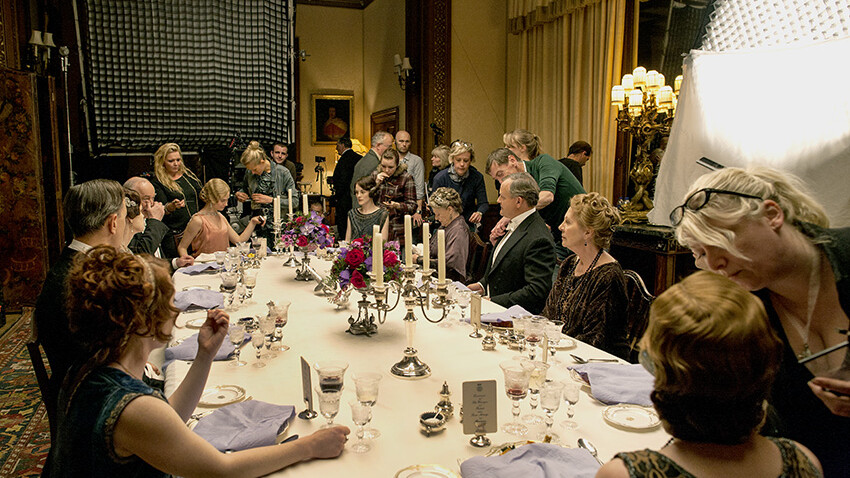
If Walls could Talk
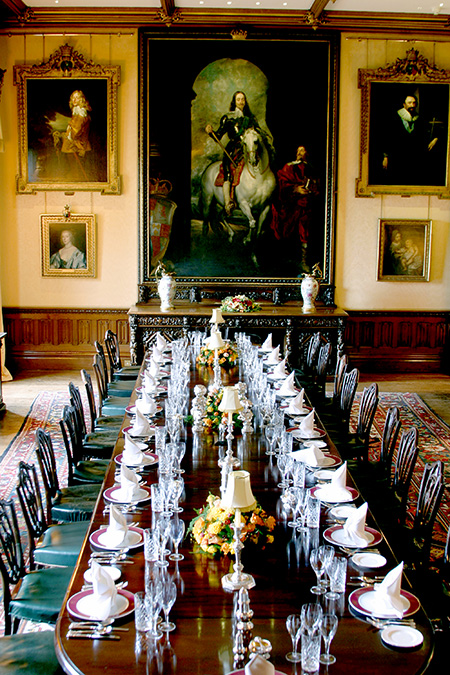 Every visitor who walks into the Dining Room knows exactly where they are, transported into the supper or lunch scenes and conversations of the much loved Downton Abbey. The wit of the Dowager, the barbed sisterly comments, the shocking scene with Lord Grantham’s ulcer... it all happened in here around the table.
Of course the fictional Downton family are seated under our portraits, Highclere’s portraits, real people whose own ups and downs were very real and often very demanding. The most recognisable portrait is, of course, that of King Charles I painted by Antony van Dyck in about 1633.
Every visitor who walks into the Dining Room knows exactly where they are, transported into the supper or lunch scenes and conversations of the much loved Downton Abbey. The wit of the Dowager, the barbed sisterly comments, the shocking scene with Lord Grantham’s ulcer... it all happened in here around the table.
Of course the fictional Downton family are seated under our portraits, Highclere’s portraits, real people whose own ups and downs were very real and often very demanding. The most recognisable portrait is, of course, that of King Charles I painted by Antony van Dyck in about 1633. 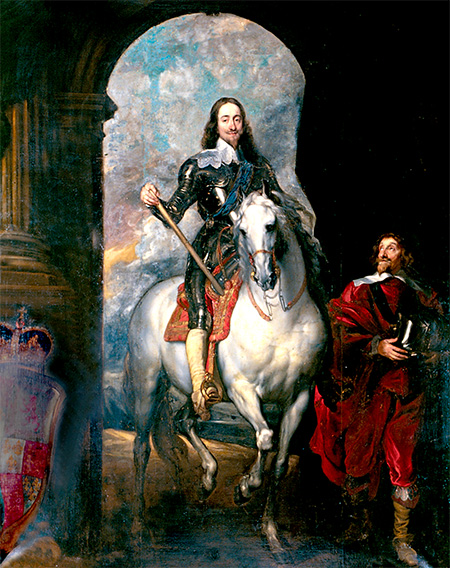 Within ten years of that date, Charles I had embroiled England in a Civil War that would end with his execution. Apart from the countless deaths in battle, perhaps 127,000 civilians lost their lives as well.
The reasons for most civil wars are very similar: who is in charge of the army, the exchequer or the courts. Leaders design autocracies whilst people design democracies which also require leaders. The English Civil War focused on Charles' adherence to the concept of the divine right of kingship which averred that only the king knew what was best whilst in reality, even then, most of us want a say in values and strategy: some sort of electoral justice and fairness.
Within ten years of that date, Charles I had embroiled England in a Civil War that would end with his execution. Apart from the countless deaths in battle, perhaps 127,000 civilians lost their lives as well.
The reasons for most civil wars are very similar: who is in charge of the army, the exchequer or the courts. Leaders design autocracies whilst people design democracies which also require leaders. The English Civil War focused on Charles' adherence to the concept of the divine right of kingship which averred that only the king knew what was best whilst in reality, even then, most of us want a say in values and strategy: some sort of electoral justice and fairness.
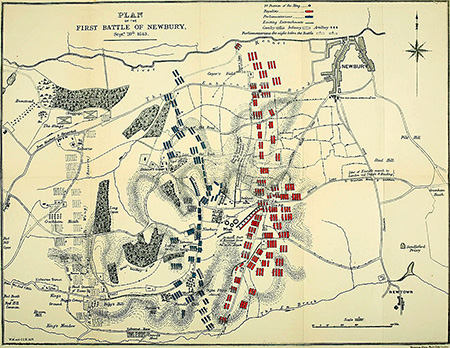 The portraits of Geordie’s ancestors flank that of Charles I and thus join him in looking down on us. They supported and fought for the King as Royalists and, in fact, there were a number of battles and skirmishes that that took place around Highclere. Perhaps the turning point of the Civil War was the first Battle of Newbury in September 1643 which was won by the Parliamentarians or perhaps more accurately, lost by Charles I.
The portraits of Geordie’s ancestors flank that of Charles I and thus join him in looking down on us. They supported and fought for the King as Royalists and, in fact, there were a number of battles and skirmishes that that took place around Highclere. Perhaps the turning point of the Civil War was the first Battle of Newbury in September 1643 which was won by the Parliamentarians or perhaps more accurately, lost by Charles I.  The 1st Earl of Carnarvon’s portrait is to one side of that of the King and he died in that battle.
In spring 1646, King Charles I was surrounded in Oxford and, as his forces surrendered, he tried to flee. In brief, at times he tried to negotiate some sort of future compromise but the Parliamentarians and their army demanded he was put on trial. He was judged and then executed in January 1649.
This family’s main endeavour thereafter was survival and the huge portrait of the King was hurriedly removed, rolled up and left to prop up a barn door, fading into obscurity as part of the “furniture” hidden in plain sight.
The 1st Earl of Carnarvon’s portrait is to one side of that of the King and he died in that battle.
In spring 1646, King Charles I was surrounded in Oxford and, as his forces surrendered, he tried to flee. In brief, at times he tried to negotiate some sort of future compromise but the Parliamentarians and their army demanded he was put on trial. He was judged and then executed in January 1649.
This family’s main endeavour thereafter was survival and the huge portrait of the King was hurriedly removed, rolled up and left to prop up a barn door, fading into obscurity as part of the “furniture” hidden in plain sight.
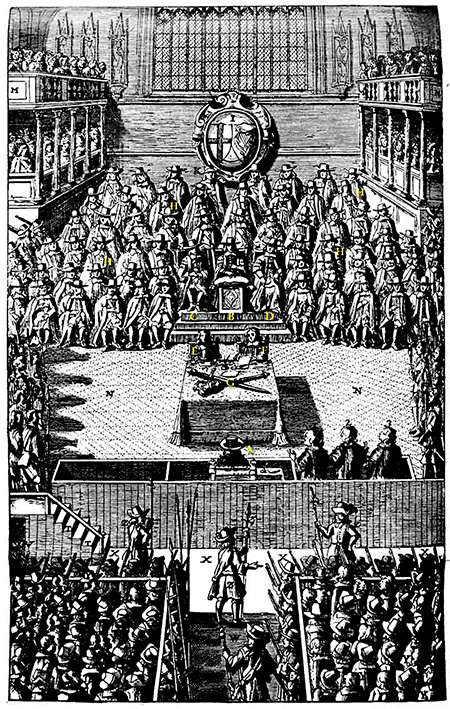 Following the success of the Parliamentarians and rise of Oliver Cromwell there was peace of some sort but a very barbed one with spies everywhere and family and 'friends' settling scores and complaining about each other to the authorities. Cessation of battle does not always lead to light and a new world and during these years many families left England to find a new world in the Americas.
Facing fearful wars and sieges today, the impending feelings of doom are the same as 380 years ago. Immediate actions often lack perspective so we can only hope for turning points and pray for the end.
Not every education system promotes history and I can’t help thinking that is a huge error: history is about inquiry, discovery, knowledge and the long view. It helps us understand the options before us today. Our ancestors throughout the world can still speak to us from beyond the grave.
Following the success of the Parliamentarians and rise of Oliver Cromwell there was peace of some sort but a very barbed one with spies everywhere and family and 'friends' settling scores and complaining about each other to the authorities. Cessation of battle does not always lead to light and a new world and during these years many families left England to find a new world in the Americas.
Facing fearful wars and sieges today, the impending feelings of doom are the same as 380 years ago. Immediate actions often lack perspective so we can only hope for turning points and pray for the end.
Not every education system promotes history and I can’t help thinking that is a huge error: history is about inquiry, discovery, knowledge and the long view. It helps us understand the options before us today. Our ancestors throughout the world can still speak to us from beyond the grave.
46 Comments
How very true, how can we make sense of the world if we don’t know about the history.
MY DEAREST LADY FIONNA,
BONJOUR , FROM BRAZIL,
" A GUERRA É SEMPRE UMA DERROTA. " PAPA FRANCISCO.
LOVELY DAY TO YOU.
THANK YOU ,SO MUCH ,FOR SHARING THIS.
VILLA ALEMÃ
RIO CLARO-SP
BRAZIL.
Thank you Maria
P.S. HAPPY AND LOVELY BIRTHDAY TO YOU MILADY .HEALTH AND SERENITY, SUCCESS ALWAYS .
FROM BRAZIL.
England’s rich and interesting history! We need to teach it to all youngsters so they will know what to avoid and not repeat the failures of the past. The same world wide…
Very insightful!
I am afraid that in the States our collective history, warts and triumphs, are being molded to fit preconceived biased perceptions and ultimately future generations will be prone to make the same mistakes.
As Abraham Lincoln said, “ you cannot escape the responsibility of tomorrow by evading it today.”
You have such a way with words.
I'm an in awe of you dear Lady Fiona, such a beautiful and inspirational article. I've always been fascinated by the English Civil War, would have loved to have been a lady of the manor then, even nearly went so far as joining the Sealed Knot Society who do re-inactments (battles) up & down the UK. Visited Highclere lady July and can't wait to go back next year, met Luis by Egyptian exhibition, so lovely to talk to as we're all your wonderful staff. I've visited Cromwell House in Ely and you are asked to choose, was he a friend or foe (villain). I've always been a Royalist. I do wish could have met you in July, hop to next time. Take care you are, doing so much good and a lovely person. My interest in Highclere came about from visiting British Museum in 1974, first tour of Tutankhamun exhibition. The queue went right round the outside, so I didn't stay just went for the the book. 2/3 yrs ago saw the real exhibits at The Saatchi gallery in London. They couldn't bring gold mask too fragile to leave Cairo. The glint of gold was breathtaking, as is your wonderful collection, & I couldn't believe your gold mask is astonishingly beautiful.
Lovely the pictures lf walls could talks did you and lord Carnarvon have a wonderful weekend and lovely to highcelere castle and l am fan of Downton Abbey
Thank you for another memorable read ,made even nicer as I was there in July thank you so much
Your comments are so very important and relevant at this particular moment. It seems that mankind continues to repeat the same mistakes over and over! Our children desperately need to understand and be informed of their place in History in the hope of avoiding the mistakes of the past.
Very relevant article to the sad state of affairs in this world.
I love the pose of the ancestor in the portrait above. He seems to be quiet at ease with himself and the world. I’m assuming he is not the Lord Carnarvon who went to battle in support of Charles I. He looks too comfortable.
Yes he is the Lord Carnarvon who fought for Charles 1.
Excellent post. I love history and I’m saddened by the false retelling we are witnessing in America today. We must remember the good and the evil done in past generations.
This is history beyond our school-day classes .... thankyou.
I look forward to further 'away from school' history classes. Thank you. Diana
Lady Carnarvon,
You are so correct - history should be a strong part of our educational system. Even students in university would be amazed of the cycles in history of war and reconciliation. It is hard to be in the middle of times such as this - especially with the tumult in the United States House of Representatives. Without leadership the US is viewed by other countries with amazement that our once strong democracy is almost in disarray.
Thank you for pointing out that we can survive - as England has over the centuries. I pray so.
May your week be calm and peaceful. Geordie’s family has come a long way!
Martha
Martha, I SO agree with you!!
Lady Carnarvon you teach, but oh so engagingly!! (Definitely the 'apple & sugar cube' method vs the 'lash & stick' method :)!
)
Thank you for the well written history lesson, the portraits I have seen in person twice & on DA now are more interesting knowing the history.
Dear Lady Carnarvon,
Thank you for the story and lovely photos. I would not have guessed that many non-combatants died in the Civil war fighting. That is a big number back then. I agree with your idea that the past still has lessons we need not repeat if we bother to explore and understand our nations' histories. I know when I visit your country, apart from gardens and nature I like to visit historical sights and museums as Britain has such a rich history.
It is fun to get bite sized nuggets of the story of England each week, thank you again for taking the time to brighten our day.
Totally agree w u re the study of history. Very sad how education is so focused on the future and lacks the depth of the past. Thank you for ur articles. I enjoy every one, Cathy
I'm curious about the portrait of Charles I.
Do you know when it was 'discovered' after having been removed, and when it was re-installed in the dining room?
I suspect it was installed early 1700's
I would be very interested to hear/read more about what happened to Geordie's and your family after King Charles I was executed -- and to Highclere, of course. Thank you so much. It is very short-sighted and dangerous to our young people that they are not taught unbiased history (or at least as balanced and honest as we can make it - teaching the "good" with the "bad.")
I saw the portraits but never knew the story behind the men. Thank you so much for the fascinating article and I especially agree with your statements on the lack of history education both today and in the last few generations. I was one that did not receive much of it, and find that it drives my desire for travel today. Better late than never!! Thank you!
Lady Carnarvon...........I agree with you. History is important. It teaches us lessons if only we would learn them.
Yes I absolutely agree. In America this cancel culture seems to forget removal of history to a new generation will lead to repetition. If we don’t study how we got here we can’t endeavor to learn from it!
Well put Happy Monday
Good afternoon, Lady Carnarvon!
In a 1948 speech to the British House of Commons, Winston Churchill said, “Those that fail to learn from History are doomed to repeat it.
I believe he was quoting the writer-philosopher George Santayana?
Thank you for loving history as much as you do, and for sharing these informative writings with us!
My father, a great student of history, repeated that quote often....
It's so true!
Dear Lady Carnarvon,
history is so interesting, I studied History at Exeter Uni, best thing I ever did, my thirst for knowledge has never waned. We have been divided as a nation over religion and by the monarchy v republic. I'm glad we restored the monarchy, the first Earl looks very dapper, and I think he knew how to enjoy himself. It must have been very hard, hiding their royalist views, and living under the Puritans, watching every word, every gesture, being a prominent family I expect they were on quite a few radars. In many respects we are still a nation divided, but thank goodness we can make our views known peacefully. All we can do is pray for peace across the world.
Jane Bentley
Both true and important, as you say Lady C, that
"history is about inquiry, discovery, knowledge and the long view. It helps us understand the options before us today. Our ancestors throughout the world can still speak to us from beyond the grave".
Sadly, as I know you're equally aware, those living under dictators get only whatever truth they are fed.
Lady Carnarvon,
Your last paragraph is salient and sad. History is worth studying and must be done w/o agenda to be fully understood. So sad many school systems don't prioritize it or gloss over or worse distort it.
Thank you for sharing some of the amazing history of Highclere Castle and your husband's family.
One thing I love about genealogy is opening up the history of other times. I found my grgrgrgrgr (or something) grandfather was also fighting for King Charles I, raising troops, losing his estate, being jailed in the Tower then dying in 1661 esteemed and commemorated by his family. He was John Stowell of Cothelstone Manor near Taunton. I visited the estate in 2015 - the same year we also visited Highclere Castle. Such a lovely part of England.
Thank you for taking the time in writing such a comprehensive and interesting article! History does have a way of repeating itself ! Thank you! Jen
Very informative.
Dear Lady Carnarvon,
It is good to know which families were Royalists. Thank you for this interesting post. It prompted me to look at an engraving bought by my husband (a Royalist and Monarchist) when he was up at Cambridge many years ago. It is battered, as is the frame, but signed P.V. Gunst I checked and it was printed in 1638 which would account for the foxing and the battered frame. Thank you for posting this interesting article and thus saving an old print and an old frame too.
How fortune you have these at Highclere to walk through the centuries by the wonderful painters who showed the way of life.
Hello Lady Carnarvon! It is amazing that your portrait of Charles 1st survived centuries of abandonment!
But it just goes to show how important an flattering work of art can be! I would like to see a portrait of Princess Anne on horseback at trooping the colour in oils and further I would like to see an oil painting of the Queen’s photo portrait at her coronation with royal sceptre and orb!
Great photograph of your 20 seater dining table!
Thankyou Lady Carnarvon
Best wishes
FLEURINA
Orange City East
Central Western NSW Australia
Dear Lady Carnarvon,
What an excellent heartfelt letter! Indeed, so profound at this moment in time. Thank you for the wonderful history lesson, which reminds us all ever so clearly, that freedom is oh such a delicate and precious thing. Indeed our ancestors do speak to us from beyond the grave, but fewer and fewer are listening. When will we ever learn?
Lady Carnarvon,
It seems that we don't do "peace" very well.
Praying for those affected by the conflicts happening around the world.
"Finally, brothers and sisters, whatever is true, whatever is right, whatever is pure, whatever is lovely, whatever is admirable--if anything is excellent or praiseworthy--think about such things."
Philippians 4:8
Thank you for sharing Highclere history with us, it is so good to learn from the past, as a dear professor once told me: "the Past was once the Living Present".
Dear Lady Carnarvon,
You share sound sentiments and understanding of the deep importance of history. What is the saying… something about if we don’t learn from the mistakes of history we are bound to repeat them? The current horror has rattled our well-being. Let us pray for peace and the hope for humanity.
You write so beautifully. I look forward each and every Monday to your posts. And I hold hope that even though I have visited Highclere a few times, I will return again to the Gardens ( gorgeous and ever- evolving), the house ( a comfortable wonder), and the Egyptian Exhibit ( incredible!).
I hope you and your loved ones stay well and safe.
Best regards,
Charlotte Merriam Cole
Thank you .... this is one of your best weekly 'letters' Lady Carnarvon .... I hated history at school .... it was SO dull .... all those politicians .... 'Compare and contrast Castlereagh and Canning' ... ugh ! It wasn't until I was at University that history suddenly hit me, for the teaching made it interesting, and I was inspired to read around it, visit museums and places like Hampton Court, and started to get interested in my families history .... history became REAL then ! When I found on one line that I had a convict sent to Van Diemans Land for stealing a deer, and also that George Stephenson on another family line. were ancestors .... well ! My joy was complete !
Dear Lady Carnarvon,
Another considered and wise comment and thought today. My mantra has always been that you never learn from the things we get right only from our mistakes. with history we rarely remember those things we got right but we always remember things we got wrong, so history is the most powerful learning tool that we all have.
Thank you again from Pangbourne, just down the road from you, visited your home on business about forty years ago with my bee-keeper friend, Oliver Field, who kept bees on your wonderful estate.
Very best regards and thank you again,
John Littleford
Brilliantly written.
Just now able to read your wonderful history of Highclere. (Life gets in the way.)
My husband taught history in our school system and has the kind of mind that remembers dates and puts everything in a timeline. He too is horrified that history is relegated to the expendable subjects in our schools. It should be a reminder to all of past mistakes and past successes so that lessons of history can light the path forward. This is true in America also.
Thank you for your insightful blog. I agree. It is tragic that our education (US) system does not teach adequate history.
Brilliant, timely and poignant. Thank you,
Lisa. T
Dear Lady Carnarvon,
I always enjoy reading your letters! You are an excellent writer and I find your postings informative, interesting, and honest. I too have a great love of history, the good, the bad, and the ugly. It all needs to be remembered.
Thank you!
Well done, Lady Carnarvon. Informative and sympathetically written. War rarely seems to resolve problems, they just accelerate and magnify differences; what is happening today exemplifies that. Peace be with you all.
Thank you Lady Carnarvon. This was so well written and very informative. Your knowledge of history is wonderful, I have questions all the time and it seems as though each time I read your letters, something is answered! I really enjoy reading your blog.
Dear Lady Carnarvon:
Thank you for this Monday's blog and excellent English history lesson. I definitely learned something new.
Enjoyed reviewing the all too familiar pictures from the Castle's Dining Room. Interesting pencil sketch of the Court and attending trial.
I apologize for not responding sooner, but I was en route from a Celebration of Life in Arizona, and only now have had the time to catch up on my emails with a review and response.
Until next week, I wish you all the best.
Perpetua Crawford
Leave a Comment
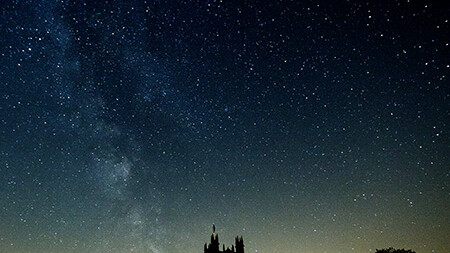
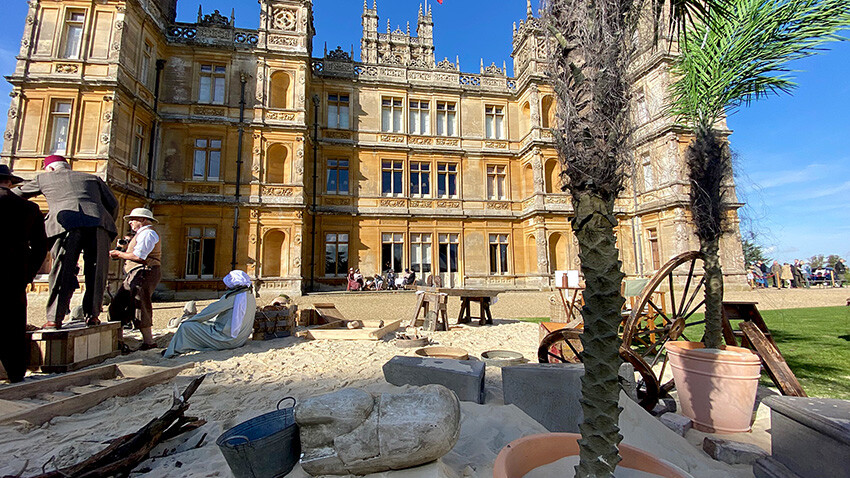
- Christmas
- Community
- Dogs & Horses
- Egypt & Tutankhamun
- Entertaining
- Farm
- Filming
- Gardens
- History & Heritage
- Daily Life
- Royalty
- Cooking
- Interiors
- Heroes
- Architecture
- Cars
- Conservation
- Downton Abbey
- Events
- Gardens & Landscape
- Highclere Castle Gin
- History
- Planes
- Restoration
- Stories & Books
- Uncategorized
- Visitors
- Wildlife

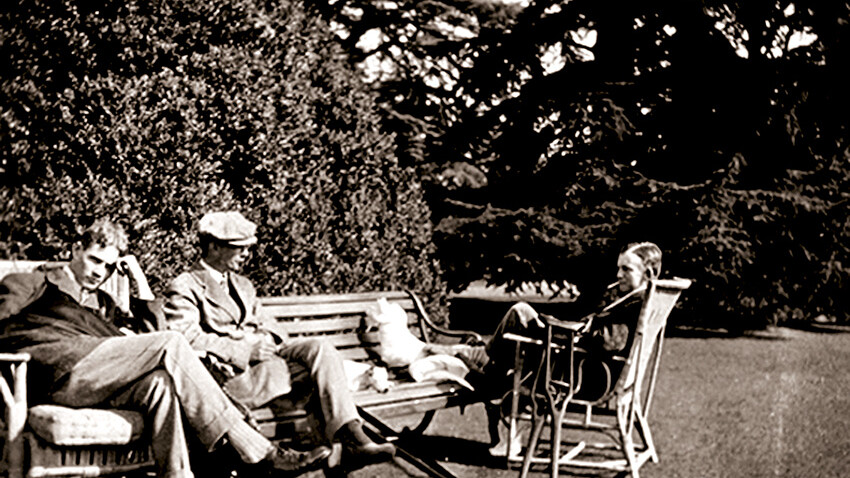
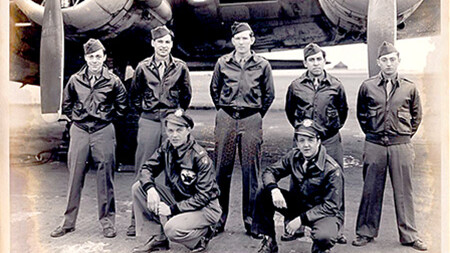
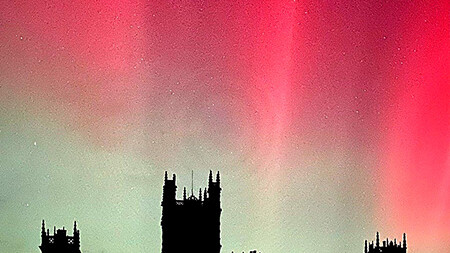
Another Great and informative news letter. Thank for the education on the history of your family.
fondly Jenny
Thank you for your word. Excellent!